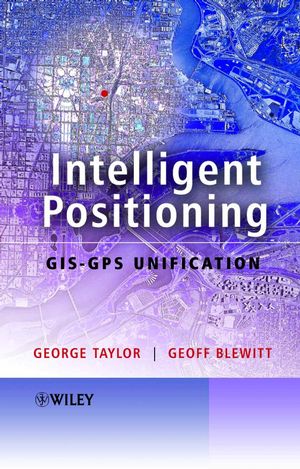Intelligent Positioning: GIS-GPS UnificationISBN: 978-0-470-85003-9
Hardcover
200 pages
May 2006
 |
||||||
Acknowledgments.
1 Introduction.
1.1 Do you really know where you are?
1.2 How active is your map?
1.3 Levels of GPS-GIS integration.
2 GIS: An Overview.
2.1 Introduction.
2.2 GIS.
2.3 Functionality.
2.4 Fundamental concepts.
2.5 Spatial and geographical data.
2.6 Spatial data modelling.
2.7 Spatial data visualisation.
2.8 GIS and the internet.
2.9 The application of GIS.
2.10 Conclusions.
3 GPS: An Introduction.
3.1 GPS description.
3.2 The Pseudorange Observable.
3.3 Point positioning using pseudorange.
3.4 The Carrier Phase Observable.
3.5 Relative positioning using carrier phase.
3.6 Introducing high precision GPS geodesy.
3.7 Conclusions.
4 Datum Transformations and Projections.
4.1 Integration requirements.
4.2 Global reference systems.
4.3 Regional reference system.
4.4 Conclusions.
5 Commercial Applications That Integrate GIS and GPS.
5.1 Introduction.
5.2 National GIS/GPS integration team.
5.3 GIS and GPS deformation monitoring.
5.4 Location Bases Services.
5.5 Intelligent transport systems.
5.6 Accessible rural public transport (Case Study).
5.7 Realtime passenger information and bus priority system.
5.8 Precision farming.
5.9 Conclusions.
6 GPS-GIS Map Matching: Combined Positioning Solution.
6.1 Introduction.
6.2 Map matching methodologies.
6.3 Road Reduction Filter (RRF) map matching algorithm.
6.4 Testing VDGPS.
6.5 Conclusions.
7 Intelligent Map Matching Using “Mapping Dilution of Precision” (MDOP).
7.1 Introduction.
7.2 Least squares estimation of position error vector.
7.3 Quantifying road geometry: Mapping Dilution of Precision (MDOP).
7.4 MDOP for basic road shapes.
7.5 Testing MDOP.
7.6 RRF map matching enhancement.
7.7 Conclusions.
8 The Use of Digital Terrain Models to Augment GPS Vehicle Navigation.
8.1 Introduction.
8.2 Digital terrain models.
8.3 Spatial interpolation of elevation data.
8.4 Map matching and the Road Reduction Filter.
8.5 Data collection and processing.
8.6 Results.
8.7 Results from test2 data with a subset of satellites.
8.8 Conclusions.
9 GPS Accuracy Estimation Using Map Matching Techniques: Applied to Vehicle Positioning and Odometer Calibration.
9.1 Introduction.
9.2 Methodology.
9.3 Map matching.
9.4 Distance correction factor.
9.5 Estimating C.
9.6 Calibration if GPS data recently online.
9.7 Putting it all together.
9.8 Alterations to the correction factor algorithm.
9.9 Height aiding.
9.10 Implementation.
9.11 Data processing and results.
9.12 Conclusions.
9.13 Outline of algorithms.
Index.



